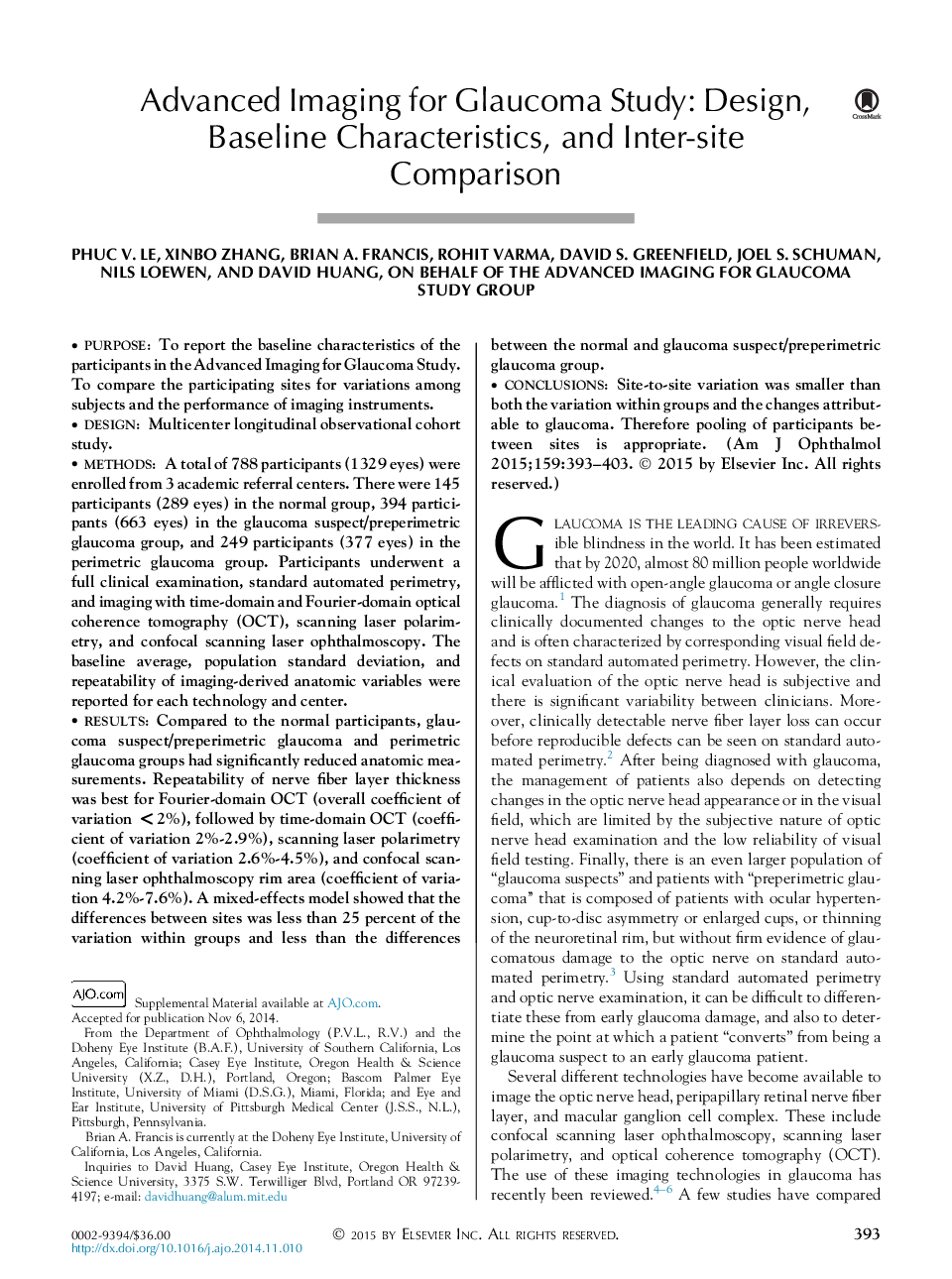| Article ID | Journal | Published Year | Pages | File Type |
|---|---|---|---|---|
| 6195662 | American Journal of Ophthalmology | 2015 | 13 Pages |
PurposeTo report the baseline characteristics of the participants in the Advanced Imaging for Glaucoma Study. To compare the participating sites for variations among subjects and the performance of imaging instruments.DesignMulticenter longitudinal observational cohort study.MethodsA total of 788 participants (1329 eyes) were enrolled from 3 academic referral centers. There were 145 participants (289 eyes) in the normal group, 394 participants (663 eyes) in the glaucoma suspect/preperimetric glaucoma group, and 249 participants (377 eyes) in the perimetric glaucoma group. Participants underwent a full clinical examination, standard automated perimetry, and imaging with time-domain and Fourier-domain optical coherence tomography (OCT), scanning laser polarimetry, and confocal scanning laser ophthalmoscopy. The baseline average, population standard deviation, and repeatability of imaging-derived anatomic variables were reported for each technology and center.ResultsCompared to the normal participants, glaucoma suspect/preperimetric glaucoma and perimetric glaucoma groups had significantly reduced anatomic measurements. Repeatability of nerve fiber layer thickness was best for Fourier-domain OCT (overall coefficient of variation <2%), followed by time-domain OCT (coefficient of variation 2%-2.9%), scanning laser polarimetry (coefficient of variation 2.6%-4.5%), and confocal scanning laser ophthalmoscopy rim area (coefficient of variation 4.2%-7.6%). A mixed-effects model showed that the differences between sites was less than 25 percent of the variation within groups and less than the differences between the normal and glaucoma suspect/preperimetric glaucoma group.ConclusionsSite-to-site variation was smaller than both the variation within groups and the changes attributable to glaucoma. Therefore pooling of participants between sites is appropriate.
